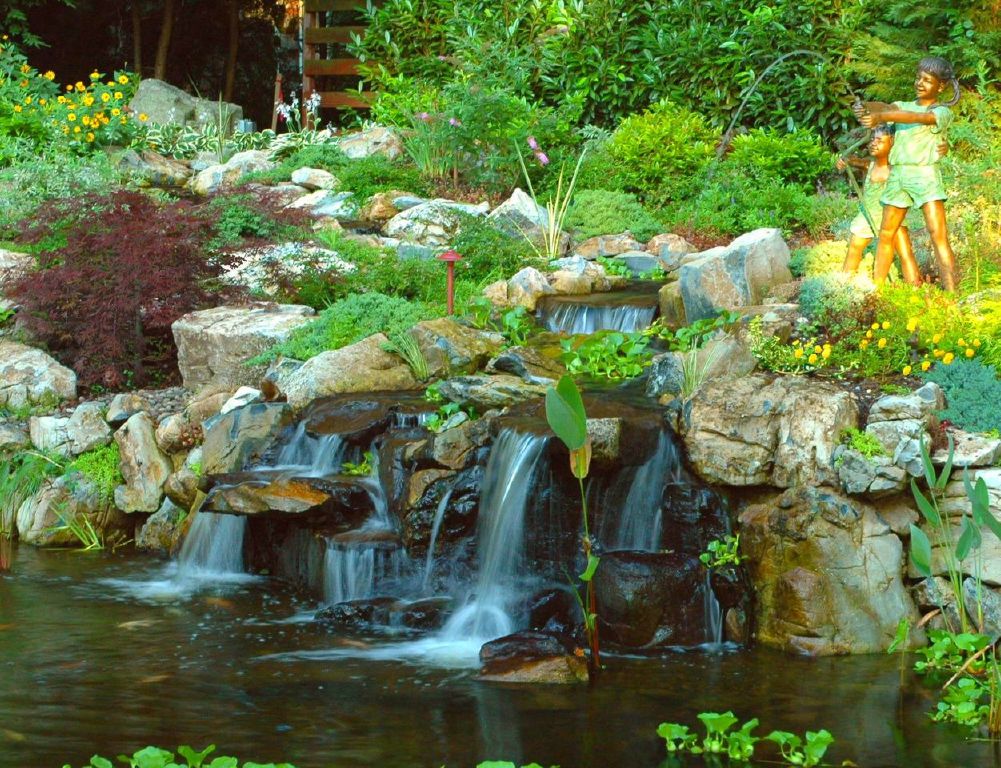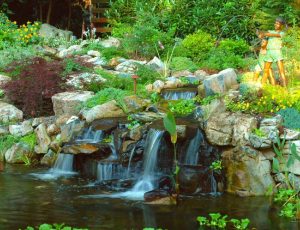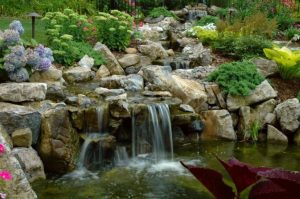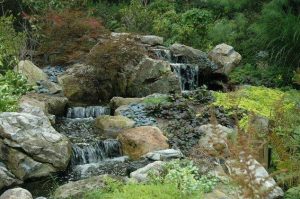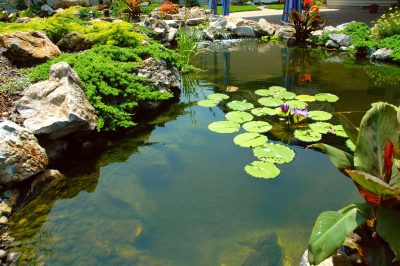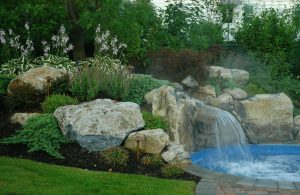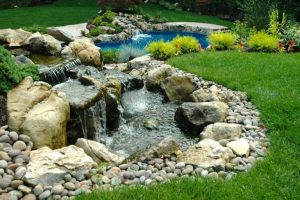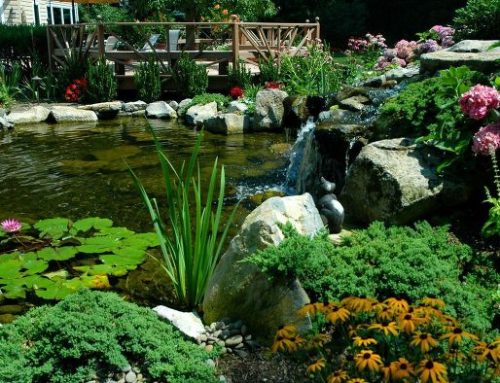To design a natural looking waterscape system, several elements are key: well chosen natural stones, quality biological filtration systems, and a wide range of ground and aquatic plants.
“To say we’ve learned a good deal over the years as to how to do this kind of work is an understatement,” says owner Dave Stockwell. “At Deck and Patio, we’ve created over 300 water features across Long Island, New York City as well as out-of-state.”
Any special tricks Deck and Patio has developed over time are of little value, he adds, if we don’t get the basics right. And those basics begin with the right rocks.”
Rocks and Boulders
When chosen well, and positioned perfectly, rocks can make a man-made waterfall and stream appear as if they’re flowing from a natural mountain bed.
Members of our team have made a study of how rocks precisely affect the flow of water. Our efforts have been rewarded; Deck and Patio has received a multitude of awards for our waterscapes.
Below are some examples of how we pull everything together.
The rocks used in this Deck and Patio pond installation – some of which weigh over three tons — were imported from farmers’ fields in New Jersey, says Dave.
Each rock was hand picked for its particular use, and sometimes for its ideal crevices in which perennials could be planted.
Whenever Deck and Patio designs and builds a new waterscape or natural landscape retaining wall, moss rock is always part of the design.
Moss grows well in shady areas, he adds. And along with ferns, it helps transform any backyard into a natural cool setting.
“Of course, also choosing the right size rocks and knowing where to position them is essential for a natural-looking scene.
When gravity urges water onward, it spills over rocks naturally, so it takes a trained eye to ensure any man-made waterscape add rocks as if nature had created the movement and water trail.
For example, each “spill rock” along this Deck and Patio backyard stream was carefully chosen and positioned to depict the most natural water movement.
The stream flows down and over a 2-foot-by-2-foot-wide moss rock waterfall and cascades into a 10-foot-by-15-foot pond. It looks like it has always been there, part of the natural environment.
Plantings
When adding a water feature to existing landscape, we consider the color and texture of surrounding plant material, as well as how the plants will eventually grow.
Here Deck and Patio planted low-lying evergreens and ground cover perennials in and around the stream and rock outcroppings. These soften the large boulders, which would otherwise stand out and spoil the natural look.
Larger flowering plantings were installed behind the water feature to provide accenting and screening. On lower portions of the slope, the water feature was planted with flowers for cutting and small beds for annuals so the client could interact with the stream garden throughout the season.
The gurus of all things pond/water gardens — Aquascape Inc., in St. Charles, IL — list the basic groups of aquatic plants as:
• Water Lilies
• Lotus
• Marginal Plants
• Water Lily-like Plants
• Floating Plants Submerged Plants.
“An ideal pond mixes plant heights, textures and color from at least three of these aquatic groups,” says Dave Stockwell, owner of Deck and Patio. “This gives the most natural look. We also don’t install plants in a symmetrical way. A more random placement appears the most natural.”
For this project, Deck and Patio also incorporated creeping evergreen ground covers that cascade and wind over and between the rocks we used.
An expert selection of plants can provide color from April through October; note also that here, the whole design flows beautifully into the back property.
Steep Property Grades Can Be Useful
“It would be wonderful if we were brought in for a job where we get to sculpt the entire property’s terrain, but, alas, that’s almost never the case,” says Dave Stockwell. “Our job is to integrate water features and the landscaping with what’s already there.”
Surprisingly, a steep property grade can be a good thing when it comes to waterscapes. Such terrain not only offers an opportunity for drama but designing a water feature along such a slope will permit Mother Nature to do all the heavy lifting — or pushing the water along.
In this case we added a stream and plantings along such a property with five cascading waterfalls — using moss rock boulders, evergreens, perennials and annuals. We also put in a series of stairs and landings to bring them down to the homeowners new pool area.

